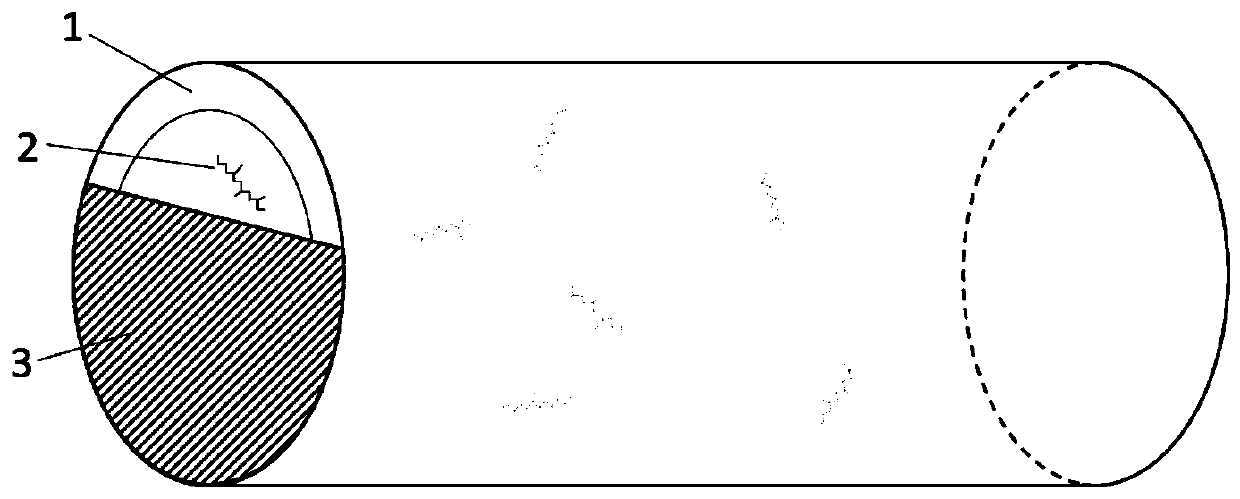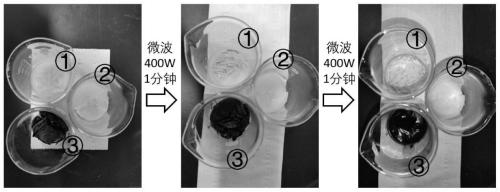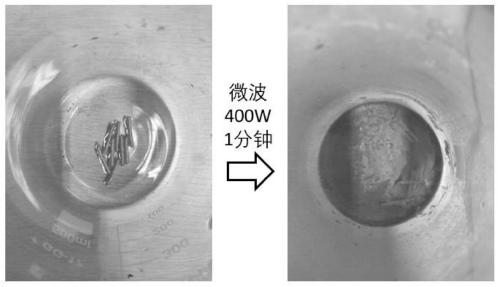Additive microcapsule based on microwave controlled release and preparation method thereof
An admixture and microcapsule technology, which is applied in the field of admixture microcapsules based on microwave controlled release and its preparation, can solve the problem of inability to actively control the release of the admixture by external signals, and achieves large storage capacity of the admixture, broad application prospects, The effect of resolving early losses
- Summary
- Abstract
- Description
- Claims
- Application Information
AI Technical Summary
Problems solved by technology
Method used
Image
Examples
Embodiment 1
[0044]The preparation of a kind of microwave controlled release additive microcapsule and the test of microwave controlled release additive, comprise the following steps:
[0045] 1. Preparation of microwave controlled-release microcapsules:
[0046] The commercial-grade PDVF fiber tube was cut to a length of 2 cm, the diameter of the selected fiber tube was 2 mm, the wall thickness was about 200 μm, and the micropore diameter on the wall was 0.2 μm. Soak the cut PDVF fiber tube completely in an aqueous solution of polycarboxylate superplasticizer with a solid content of 10% (add a small amount of methyl orange indicator), and then place it in a vacuum drying dish to draw a negative pressure to less than 20Kpa for 24 hours , so that the PDVF fiber tube is fully filled with water reducing agent. After the fiber tube filled with liquid water reducer is taken out from the solution, it is quickly immersed in melted paraffin and then taken out, so that the paraffin is rapidly soli...
Embodiment 2
[0050] The commercial-grade PDVF fiber tube was cut to a length of 1 cm, the diameter of the selected fiber tube was 1 mm, the wall thickness was about 50 μm, and the micropore diameter on the wall was 0.01 μm. Soak the cut PDVF fiber tube completely in the aqueous solution of imidazole rust inhibitor, and then place it in a vacuum drying dish to draw a negative pressure to less than 20Kpa for 24 hours, so that the PDVF fiber tube is fully filled with the rust inhibitor. After the fiber tube filled with the liquid rust inhibitor is taken out from the solution, it is quickly immersed in melted paraffin and then taken out, so that the paraffin is rapidly solidified at room temperature (20°C) to seal and wrap the entire fiber tube. The melting point of the paraffin is 50- 55°C. The steps of immersing the fiber tube in melted paraffin and taking it out are repeated several times, so that the fiber tube is completely encapsulated, and the target microwave controlled-release microca...
Embodiment 3
[0052] The commercial-grade PDVF fiber tube was cut to a length of 1 cm, the diameter of the selected fiber tube was 1.5 mm, the wall thickness was about 100 μm, and the micropore diameter on the wall was 0.01 μm. Soak the cut PDVF fiber tube completely in the viscosifier (polyethylene glycol aqueous solution, molecular weight 400, mass fraction 10%), and then place it in a vacuum drying dish with a negative pressure of less than 20Kpa for 24 hours to make the PDVF fiber The tube is fully filled with tackifier. After the fiber tube filled with liquid rust inhibitor is taken out from the solution, it is quickly immersed in the gel formed by liquid stearic acid + peanut oil and then taken out again, so that the gel can be solidified rapidly at room temperature (20°C) to seal and wrap the entire fiber tube , the gel phase transition point is about 50-55°C. The gel completely encapsulates the fiber tube to obtain the target microwave controlled release microcapsule.
[0053] For...
PUM
| Property | Measurement | Unit |
|---|---|---|
| diameter | aaaaa | aaaaa |
| length | aaaaa | aaaaa |
| thickness | aaaaa | aaaaa |
Abstract
Description
Claims
Application Information
 Login to View More
Login to View More - R&D
- Intellectual Property
- Life Sciences
- Materials
- Tech Scout
- Unparalleled Data Quality
- Higher Quality Content
- 60% Fewer Hallucinations
Browse by: Latest US Patents, China's latest patents, Technical Efficacy Thesaurus, Application Domain, Technology Topic, Popular Technical Reports.
© 2025 PatSnap. All rights reserved.Legal|Privacy policy|Modern Slavery Act Transparency Statement|Sitemap|About US| Contact US: help@patsnap.com



